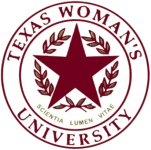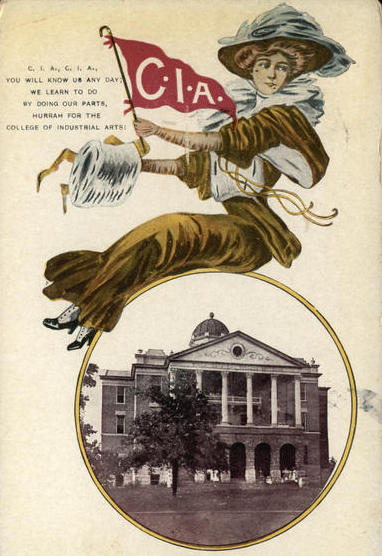Texas Woman’s University
Texas
1901
Formerly “College of Industrial Arts” and “Texas State College for Women”




In 1903 the first president of the all-female College of Industrial Arts asked the students of the college to suggest color combinations for the new school by writing their color ideas on slips of paper that were placed in a ballot box. When the results were tabulated, red and white was the most popular combination of colors. The Board of Regents officially approved this decision. The first time the colors were worn was for spring break in 1904 when the women were given red and white ribbons to wear on their trips home. The red was of a dark shade. A dark reddish shade of maroon and white were also the college colors of the all-male Agricultural and Mechanical College of Texas (later Texas A&M University) at this point; the two schools had a close relationship until Texas A&M became coeducational in the early 1960s. By the 1920s Texas A&M had changed its colors to maroon and white, and by the 1950s the colors of Texas State College for Women had also changed to maroon and white. It is not known when this change officially occurred.


The Industrial Arts College is cited in a 1927 Intercollegiate Bureau of Academic Costume (IBAC) list as using a hood lined red with a white chevron, but since this was a description that did not identify the shade of red, it may have been nothing more than a record of the college’s colors transcribed into a “hypothetical” hood lining template, and not an official Intercollegiate Bureau assignment. An identical description appeared in a 1948 IBAC list. However, a list compiled by Kevin Sheard in Academic Heraldry in America (1962) described the hood lining of the newly-named Texas Woman’s University as maroon with a white chevron, a description repeated in a 1969 IBAC list. Unfortunately, this was a duplication of the hood lining the Bureau had already assigned to Lafayette College in 1896.
To correct this error, Texas Woman’s University has been reassigned a hood lined maroon with two reversed white chevrons – an homage to TWU’s shared history with Texas A&M (maroon with a reversed white chevron).